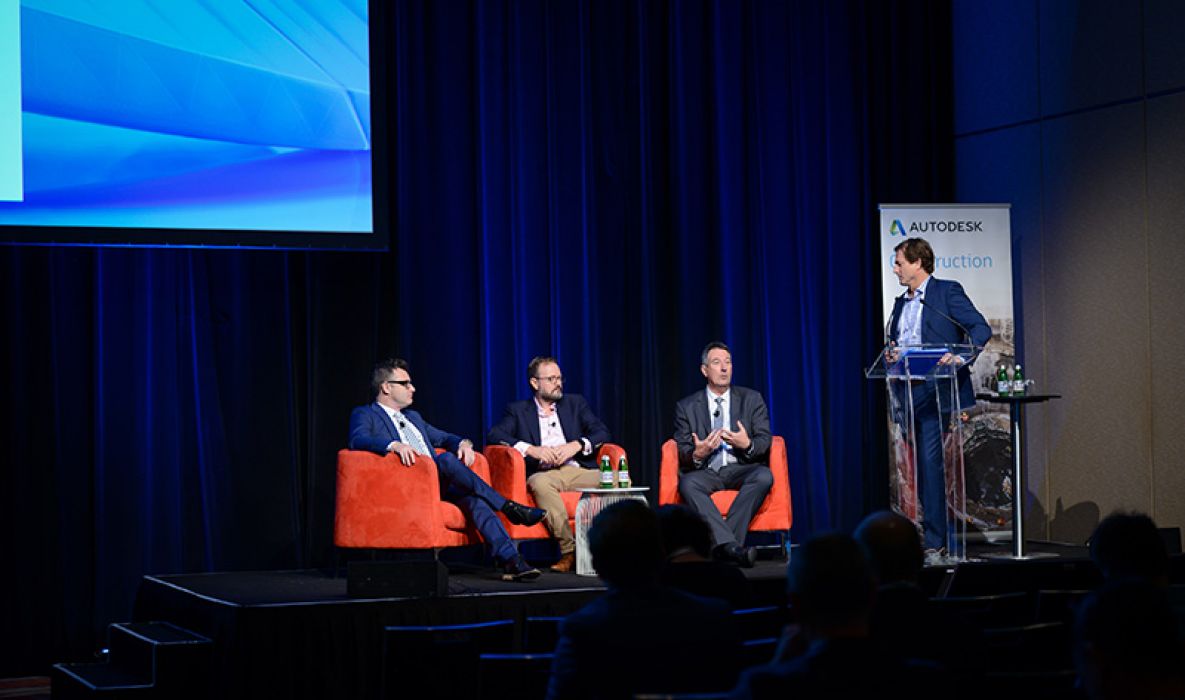
Embrace an opportunity or risk being left behind
The construction industry is at the cusp of a new era, with technology creating new applications and tools that are changing how companies design, plan, and execute projects.
By providing advanced software, construction-focused hardware, and analytics capabilities, these advancements are eliminating the difficulties of compiling and sharing project information. Such improvements could not come at a better time, since construction projects are becoming increasingly complex and expensive, putting businesses under greater pressure to improve cost, timeline, and efficiency.
At the recent Annual Autodesk Conference in Sydney, Hansen Yuncken CEO Peter Salveson, shared his insights on construction advancements and what Hansen Yuncken is doing to push the boundaries of innovation.
What is the single biggest barrier you are seeing in the construction market currently?
Lots of smart new tools and applications, providing great potential and efficiency in pockets, however the real efficiency comes with true integration into repeatable business processes. I strongly believe that companies who invest here will improve certainty of outcome and improve the bottom line. I think the current biggest challenge is upskilling clients so that design consultants have the correct scope to enable contractors to use models productively.
Do you think Australia should mandate BIM/Digital Engineering for public sector projects?
In my opinion, Public Administration must take an asset lifecycle approach. Particularly with government departments who are funded to manage their entire portfolio of built assets. In practice, government should manage the provision of new assets (CAPEX) separately to Operational and maintenance costs (OPEX). The real opportunity in mandating a BIM or VDC workflow would be to force a more efficient process in the asset lifecycle including design, construction, asset management and eventual disposal of built assets.
How is your business addressing the issue of digitisation of the industry?
Each aspect of our business is connected by data. Our staff are now mobile in the field, utilising Autodesk BIM 360 Field and solving all the issues arising with safety and quality performance in the field. Staff are using iPads to interact with models in 360 Glue to resolve issues on the spot. Most importantly, the knowledge gathered as part of these digital site processes is being rolled out across all other business functions. Our project monthly reviews and state reports are all automated using intelligence dashboards, and as CEO, I now report to the board using a largely automated and interactive reporting dashboard which allows me to focus on solutions, rather than reporting the problem.
Prefabrication is something that can address issues of productivity on the construction site, what needs to be done to address supply chain management and the skills of the supply chain in relation to digitisation?
With the industry undoubtedly heading in that direction, we need to embrace the journey and seek the opportunities to innovate or risk being left behind. This involves different procurement models and improved tolerances in surveying and construction process on site. I don’t think we can expect the supply chain to upskill in isolation. I think the answer lies in companies partnering to align processes and achieve streamlined and repeatable process. This is the approach we have taken at HY.